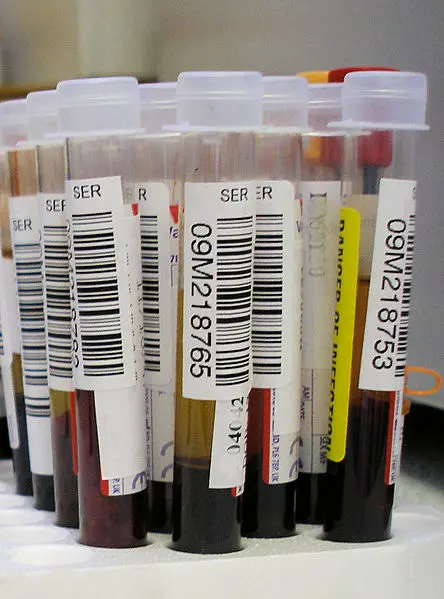Effective treatment of cancer relies on the diagnosis of the patient’s sample. Commonly, tissue biopsies are performed and mutations observed in these samples can inform physicians of the appropriate therapy to be prescribed.
Although currently considered the ‘gold standard’, tissue biopsies are not without limitations. The realization that molecular abnormalities and mutations in tumors dynamically change in regards to time and treatment has raised questions on whether tissue biopsies are sensitive enough to capture such changes. Furthermore, as Professor Holger Sültmann, the head of the Cancer Genome Research Group of the DKFZ explains, ‘tissue biopsy is much more invasive, and in some cases a risky procedure.’
In recent years a new alternative, termed liquid biopsy, is gaining attention. When cells die, they release their DNA (so-called cell free DNA, cfDNA) into the bloodstream. For tumor cells that die after therapy, the cfDNA contains mutations that could be detected and analyzed with PCR or sequencing tools for non-invasive diagnosis. ‘In contrast (to tissue biopsy), liquid biopsy is simply drawing a few milliliters of blood, isolating the DNA and performing the molecular analysis,’ commented Professor Sültmann on the method’s advantage.
However, the sensitivity and clinical information provided by liquid biopsy is less clear. This prompted the group to investigate further. By collaborating with partners at the Heidelberg Thoraxklinik, the DKFZ researchers recruited a focused cohort of 16 lung cancer patients, all of whom carried prominent mutations, and were undergoing tyrosine kinase inhibitor (TKI) treatment. Over a period of up to two years, the researchers collected sequential blood plasma samples from each patient and extracted the DNA. Using digital PCR assays, they looked for cfDNAs containing mutations, and compared the number of detected mutations with clinical data at all possible timepoints.
‘Initially we didn’t know what to expect. We wanted to test if it is possible at all to identify mutational changes in the (blood) plasma over time, and whether we can associate these with clinical parameters.’ By analyzing the data, the scientists made three interesting observations.
First, the number of mutated alleles in patients changed in accordance to the clinical course of the disease. For example, in one patient, the initiation of TKI therapy was paralleled by a drastic and immediate (within 26 hours) rise of mutated cfDNA in the blood plasma, probably indicative of an effective therapy response that resulted in many cancer cell deaths. Interestingly, this ‘peak’ declined shortly afterwards, suggesting that TKI therapy had its greatest impact only during the first few days of treatment. ‘’This indicates that we have to monitor very closely around the timepoint of TKI therapy onset,’’ Professor Sültmann remarked.
Secondly, the researchers also found that low, or absent levels of mutated cfDNA associated with sustained periods where the disease remained under control and the tumor did not grow. Finally, in patients whose tumor relapsed and who died soon afterwards, the mutated cfDNA levels were found to be increasing rapidly over short timeframes. In some cases, this increase was observable even before the actual clinical manifestation.
These findings highlight liquid biopsy’s sensitivity in detecting and reflecting tumor changes in real time, while providing the advantages of being less invasive. The molecular data provided by this method might also help inform physicians to make earlier decisions on therapeutic strategies. Nonetheless, due to the study’s preliminary nature, Professor Sültmann reminds that a lot more work remains be done: ‘’This is a ‘proof of concept’, we should really collect and measure cfDNA more systematically in order to learn what the liquid biopsy can do under these circumstances, and to fully comprehend the principles of lung cancer progression.’’
Mutation analysis of circulating plasma DNA to determine response to EGFR tyrosine kinase inhibitor therapy of lung adenocarcinoma patients.
Riediger AL, Dietz S, Schirmer U, Meister M, Heinzmann-Groth I, Schneider M, Muley T, Thomas M, Sültmann H. Sci Rep. 2016 Sep 19;6:33505. doi: 10.1038/srep33505.



